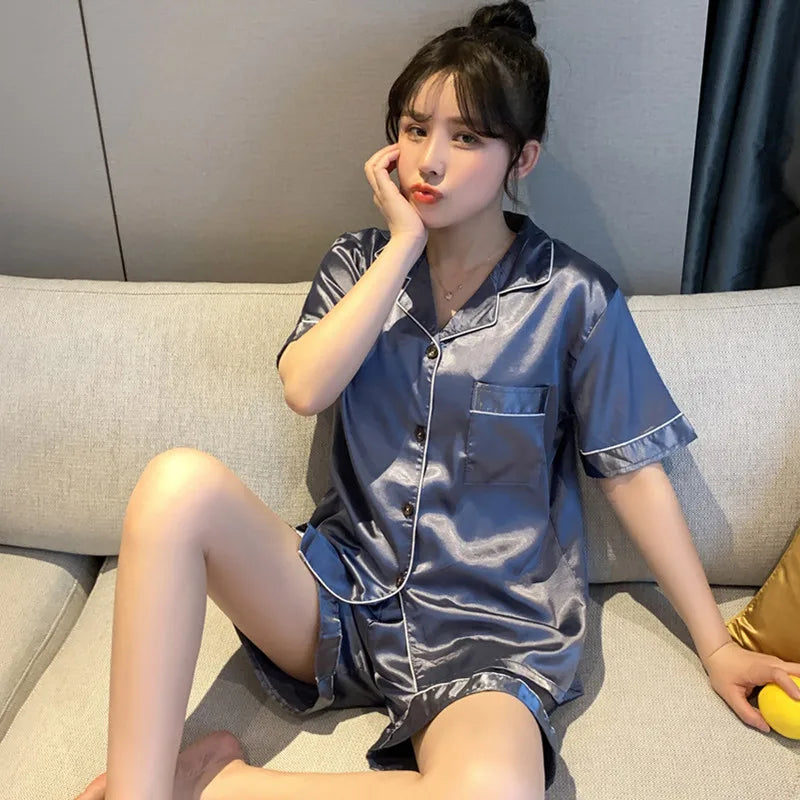Where Did Pajamas Originate? A Journey Through Time and Culture
Table of Contents
- Introduction
- The Etymology of Pajamas: Tracing Their Roots
- The Introduction of Pajamas to the Western World
- The Evolution of Pajamas into Modern Sleepwear
- Cultural Significance and Variations of Pajamas Across Different Societies
- Contemporary Perceptions and the Future of Pajamas in Fashion
- Conclusion
- FAQ
Introduction
Have you ever pondered the origins of your favorite cozy garments? Today, we invite you to explore the fascinating history of pajamas, an everyday staple in many households around the globe. From their humble beginnings in Asia to their evolution into stylish loungewear, pajamas have a rich story that intertwines with cultural exchanges, colonial history, and fashion revolutions. This blog post will unravel the journey of pajamas, detailing their origins, evolution, and significance in contemporary society.
At Relaxed Nights, we believe in the power of comfort and elegance, which is why understanding the roots of pajamas can enhance our appreciation for the nightwear we wear. By the end of this article, you will have a comprehensive understanding of where pajamas originated, how they transformed over centuries, and why they remain an essential part of our nightly routines.
We will cover the following key aspects in our exploration of pajamas:
- The etymology of pajamas and their origins in Asia.
- The introduction of pajamas to the Western world.
- The evolution of pajamas into modern sleepwear.
- Cultural significance and variations of pajamas across different societies.
- Contemporary perceptions and the future of pajamas in fashion.
So, let’s dive into this intriguing journey of pajamas and discover how this simple garment became a symbol of comfort and style.
The Etymology of Pajamas: Tracing Their Roots
The word "pajama" is derived from the Hindi and Urdu term "pāy-jāma," which translates to "leg garment." This term itself has Persian origins, with "pāy" meaning "foot" or "leg" and "jāma" meaning "clothing." The garment traditionally worn in South Asia was designed for comfort and ease of movement, featuring loose-fitting trousers tied at the waist with a drawstring.
Historically, pajamas were not just limited to nighttime wear; they were often worn as everyday clothing. The loose design provided comfort in hot climates, making them a practical choice for both men and women across various cultures in South Asia and the Middle East. As we delve deeper into the origins of pajamas, we recognize their significance as more than just sleepwear; they represent a blend of tradition, culture, and comfort.
The Introduction of Pajamas to the Western World
The journey of pajamas into Western culture began during the British colonial period in the 18th and 19th centuries. British colonists in India observed the local populace wearing pajamas and were drawn to their comfort and practicality. Initially introduced as "mogul's breeches," these garments quickly captured the attention of European aristocrats, who brought them back to their home countries.
Pajamas began to gain popularity in England during the Victorian era, around the 1870s. Men, who traditionally wore nightgowns, started to embrace pajamas as a more comfortable and stylish alternative. The transition from nightgowns to pajamas represented a shift in societal norms and attitudes toward sleepwear, paving the way for the garments we know today.
Interestingly, pajamas were initially reserved for the upper classes, symbolizing wealth and sophistication. However, as the 20th century progressed, mass production and changing attitudes toward fashion made pajamas accessible to the general public. This democratization of pajamas marked a pivotal moment in their history, leading to the diverse styles and designs we see in contemporary fashion.
The Evolution of Pajamas into Modern Sleepwear
The late 19th and early 20th centuries saw significant changes in pajama design and function. As hygiene and cleanliness became priorities, pajamas offered a way to separate daytime clothing from nighttime wear. They became a symbol of modernity, comfort, and a new approach to personal care.
In the 1920s, the fashion landscape shifted dramatically. The emergence of the "flapper" culture heralded a new era of liberation for women, including their clothing choices. Pajamas transitioned from practical nightwear to fashionable attire. Designers began experimenting with various fabrics—silks, satins, and vibrant patterns—transforming pajamas into chic garments suitable for wearing beyond the confines of the bedroom.
By the mid-20th century, pajamas had established themselves as a staple in women's fashion. Iconic figures like Coco Chanel helped popularize pajamas as outerwear, allowing women to express their personal style while enjoying the comfort that pajamas provided. This shift marked a significant departure from traditional notions of femininity and opened doors for more relaxed and versatile clothing options.
As we moved into the late 20th century, pajamas continued to evolve, reflecting societal changes and fashion trends. The rise of loungewear and the casualization of fashion blurred the lines between sleepwear and everyday clothing. Pajamas became not only a symbol of comfort but also a canvas for self-expression, showcasing individual style and flair.
Cultural Significance and Variations of Pajamas Across Different Societies
The cultural significance of pajamas extends far beyond their function as clothing. Throughout history, pajamas have been a reflection of social norms, identity, and cultural values. In various cultures, pajamas have taken on unique forms and meanings, adapting to local customs and preferences.
In South Asia, for example, the kurta pajama ensemble remains a popular choice for both men and women, transcending boundaries of class and culture. The combination of a long, loose-fitting kurta with pajama pants is not only comfortable but also represents a rich cultural heritage. This traditional attire is often worn during festivals and celebrations, showcasing the vibrancy and diversity of South Asian cultures.
In contrast, Western interpretations of pajamas have often leaned toward more casual, relaxed styles. The introduction of matching sets, including both tops and bottoms, has become a staple in many households. Today, pajamas are often associated with cozy nights in, family bonding, and self-care rituals.
Moreover, the globalization of fashion has led to a blending of styles, with traditional pajama designs being reimagined and incorporated into contemporary fashion. This fusion of styles allows for an exciting range of options, catering to the diverse preferences of modern consumers.
Contemporary Perceptions and the Future of Pajamas in Fashion
In today's fast-paced world, pajamas have evolved into more than just sleepwear; they have become a lifestyle choice. The rise of athleisure and the emphasis on comfort have propelled pajamas into the spotlight, making them a go-to option for lounging, working from home, and even casual outings.
At Relaxed Nights, we recognize the importance of comfort and elegance in our pajama designs. Our premium night dresses and pajama sets are meticulously crafted from the finest materials, ensuring that every woman feels beautiful and comfortable, whether winding down for the evening or enjoying a leisurely morning. The soft, breathable fabrics we use are chosen for their quality and durability, allowing our customers to embrace relaxation without compromising on style.
As we look to the future, pajamas will continue to adapt to the changing landscape of fashion and society. The ongoing demand for versatile, comfortable clothing suggests that pajamas will remain an essential part of wardrobes for years to come. Furthermore, as sustainability becomes a key focus in the fashion industry, we at Relaxed Nights are committed to ensuring that our products are not only stylish but also environmentally responsible.
Conclusion
The history of pajamas is a testament to the enduring quest for comfort and style. From their origins in Asia to their transformation into modern sleepwear, pajamas have woven themselves into the fabric of our daily lives. They serve as a reminder of the importance of relaxation, self-care, and personal expression.
As we embrace the comfort and elegance that pajamas provide, we encourage you to explore our curated collections at Relaxed Nights. Our premium night dresses, pajama sets, and loungewear are designed to elevate your nightly routine, allowing you to unwind in style and grace.
Explore more about our collections:
- Checked Collection
- Couple Sets Collection
- Men Sets Collection
- Night Gowns Collection
- Onesies Collection
- Robes Collection
- Women Sets Collection
FAQ
1. What are pajamas made of?
Pajamas can be made from a variety of materials, including cotton, silk, flannel, and blends. At Relaxed Nights, we prioritize using the finest fabrics that offer softness, breathability, and durability.
2. When did pajamas become popular in the Western world?
Pajamas gained popularity in the Western world during the Victorian era, around the 1870s, when men began to embrace them as a comfortable alternative to nightgowns.
3. Are pajamas suitable for wearing outside the home?
Yes! Many modern pajamas are designed to be versatile, allowing you to wear them for lounging, working from home, or even casual outings, especially with the rise of loungewear.
4. How can I choose the right pajamas for myself?
When choosing pajamas, consider factors like fabric, fit, and style. Opt for materials that feel comfortable against your skin, and choose styles that suit your preferences and lifestyle.
5. What is the significance of pajamas in different cultures?
Pajamas hold cultural significance in various societies, often reflecting traditions, social norms, and individual identities. They can symbolize comfort, status, and personal expression.
By understanding the rich history and evolution of pajamas, we can appreciate the comfort and elegance they bring to our lives. Let's continue to embrace this timeless garment and enjoy its many forms and styles for years to come!



